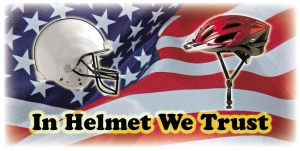A couple of weeks ago, the Washington Post and several other, normally reputable, news agencies completely failed their basic journalistic responsibility and reported that head injuries are up in cities with bike share programs. The point of all of this, of course, is that bike share users should be required to wear helmets, or as I prefer to call them, the foam hat of invincibility and reliever of motorist accountability. Even a cursory review of the data cited by the study in question showed that quite the opposite was true: all injuries, including head injuries, are sharply down in cities with bike share. The injury declines are so drastic (an average of 28%) that inquiring minds are trying to figure out exactly how this could be possible when we all know that riding a bike without a helmet is tantamount to playing Russian roulette with an irritated chimp.
The mythical force of the “safety in numbers” effect is being touted as the primary cause of the decline in injury rates. An increase in cyclists results in an inordinate increase in safety for everybody as drivers become used to cyclists on the roads, or so the theory goes. While safety in numbers is certainly a real phenomenon, it seems unlikely that the modest increase in cyclists due to bike share programs was the tipping point for safety in numbers.
Another explanation is that cities that have invested in bike share have also been investing in improved bicycle infrastructure, often during the same time frame, and hence the improvements in injury rates. This seems like a reasonable explanation on paper, but the infrastructure improvements being made in North American cities are still largely paint based. Little has been done to build real segregated infrastructure and it seems unlikely that sharrows on still-car congested roads can claim the glory of such a large reduction in injury rates.
I propose another theory, one that will surely be as popular with American cyclist “culture” as a bare-headed baby in a Bakfiets, but what the hell, let’s go for it. What if the large decline in injuries is the result of the bike share bikes themselves? Bike share bikes are slow, lumbering and upright, taking their design aesthetic and cycling Zen from the likes of Amsterdam and Copenhagen, not the “cat 6” culture of London or New York. The predominant bicycle in North America is a fast, finicky, forward pitched, and performance-oriented road bike. Is it possible that the injury decline in bike share cities is so great because slower, upright bikes are just that much safer? 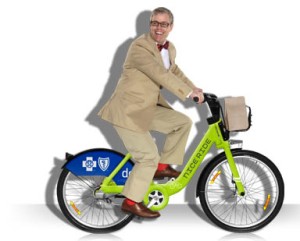
The theory seems instinctively correct. When riding on one of my Dutch bikes, I feel absolutely no need to wear a helmet as my visibility is great and my speeds are quite low. The big tires and upright geometry provide great control and I’ve never had a crash. However, even this helmet skeptic puts on a brain dome when I do take to the streets on my single speed road bike (to protect me from my own ineptitude should I crash – not for protection from 1.5+ tons of steel). To add weight to this argument, one would also think that bike share riders, who probably ride less frequently than their bike owning counterparts and are less familiar with the city they are riding in (many are tourists), might be more prone to crashing and injuries. Yet, this isn’t happening. Is the less skilled, 10 mph, bike share rider inherently safer than the 20 mph, helmet clad road warrior?
The relationship between speed and the lethality of car collisions is well understood and it seems reasonable to assume that this same law is true for bicyclists. The faster you go the less time you have to react, and the greater the damage will be in the event of a collision. Yet nobody ever talks about the ramifications of speed in cycling safety. As helmets have historically been the primary thrust of safety efforts, with infrastructure only recently being taken seriously in North America, few have questioned the American’s choice of bicycle as being part of the safety conversation. This new data should provoke us to spend more time analyzing the effects of bicycle geometry and speed on injury rates. Perhaps the Dutch aren’t safe purely because of their stellar infrastructure. Their choice of slow, upright bikes may also play a role in safety outcomes. It’s time to question the sanity and safety of the road bike as the primary choice for American cyclists.

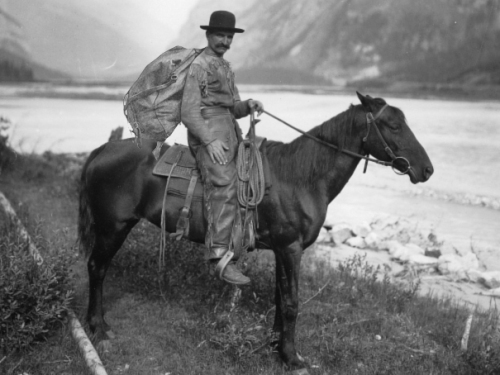


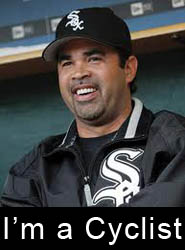
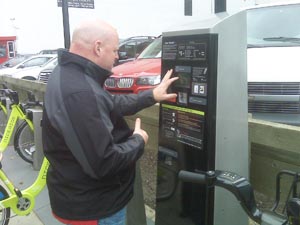

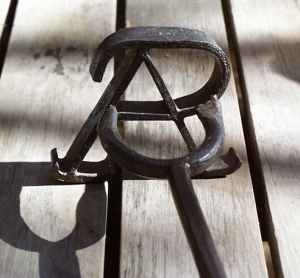 In a country where biking as a means of transportation is so rare, everybody who saddles up is an involuntary bicycle advocate. The bike you ride, the clothes you wear, and your riding behavior all create a positive or negative impression on the public’s view of cyclists. Take this (highly unscientific yet fun) survey to find out how your biking preferences help or hinder the propagation of “every day” cycling:
In a country where biking as a means of transportation is so rare, everybody who saddles up is an involuntary bicycle advocate. The bike you ride, the clothes you wear, and your riding behavior all create a positive or negative impression on the public’s view of cyclists. Take this (highly unscientific yet fun) survey to find out how your biking preferences help or hinder the propagation of “every day” cycling: 